Utah basements are a common feature in many homes across the state, providing valuable space for storage, recreation, or additional living areas. However, these below-ground spaces are not without their challenges. From water seepage and flooding due to Utah’s high water table and snowmelt to foundation settling and cracks caused by the region’s expansive soils, basements in Utah face a variety of issues that can impact the health and safety of the home and its occupants. Understanding and addressing these common problems in Utah basements is essential for homeowners to maintain a functional and comfortable basement space.
Addressing Basement Flooding
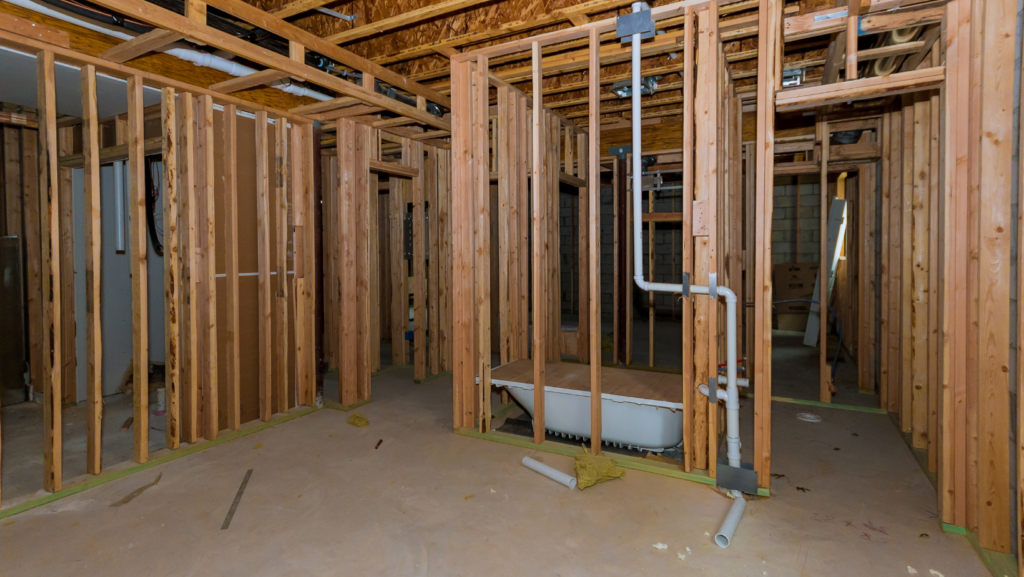
Basement flooding, a prevalent issue in many homes along the Wasatch Front, requires systematic analysis and precise intervention to mitigate and prevent water damage effectively. To address this, homeowners must first identify the primary sources of water ingress. Common causes include improper grading around the house foundation, ineffective or clogged drainage systems, and hydrostatic pressure exerted by groundwater.
A technical approach involves installing a robust sump pump system, which serves as an important line of defense. Selecting the right sump pump depends on the basement’s susceptibility to flooding and the typical water volume. Additionally, integrating a battery backup system ensures operation during power outages, essential for maintaining the integrity of the basement’s waterproofing system under all conditions.
Proper sealing of foundation cracks and joints with hydraulic cement and other appropriate sealants is another essential measure. This prevents water from seeping through structural weaknesses, which could compromise the foundation’s stability and the home’s overall safety.
Regular maintenance, such as cleaning gutters and inspecting downspouts, is necessary to ensure they divert water away from the foundation effectively. Implementing these strategies not only protects the basement from flooding but also preserves the structural integrity and safety of the property.
Combating Mold and Mildew
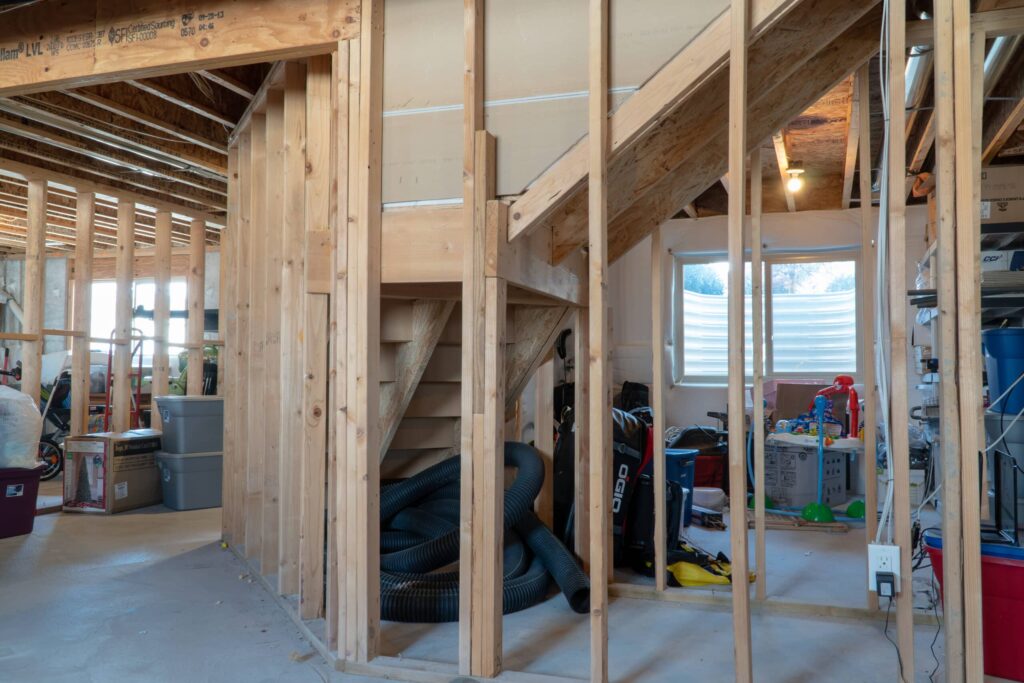
To effectively combat mold and mildew in basements, maintain low humidity levels and guarantee proper ventilation. Mold and mildew thrive in moist environments, making basements particularly susceptible due to their typically lower temperatures and potential for water intrusion. The installation of a high-quality dehumidifier, specifically designed to manage and maintain the relative humidity below 50%, is a simple solution to keep the threshold above which mold growth is supported.
Making sure that your basement has adequate ventilation is vital. This can be achieved through the use of exhaust fans and venting systems that promote air circulation, effectively reducing moisture buildup. It’s also advisable to inspect and, if necessary, upgrade HVAC systems to include moisture-control settings.
From a structural perspective, the use of moisture-resistant materials during the basement finishing process can greatly deter mold growth. Materials such as moisture-resistant drywall, concrete sealants, and anti-microbial paints are recommended. These materials not only resist mold but also withstand the typical wear and tear in a basement environment.
Regular maintenance checks, including inspecting for leaks and clearing gutters and downspouts, are essential preventive measures. These actions ensure that water is properly diverted away from the foundation, further mitigating the risk of mold and mildew development in basement areas.
Enhancing Poor Lighting
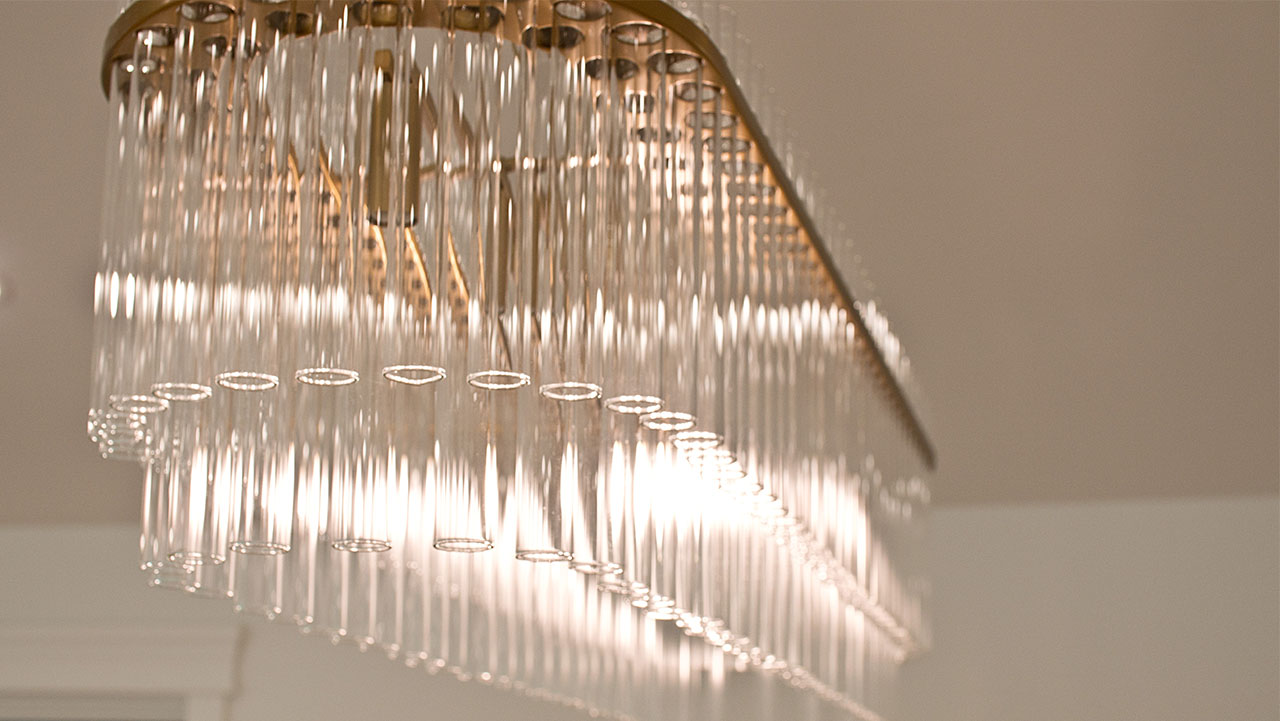
Poor lighting and lack of windows are other common problems in Utah Basements. Poor lighting not only impacts the usability of the space but also the safety and comfort of its occupants. Implementing strategic lighting solutions can transform a dim basement into a bright, functional area suitable for various activities.
To enhance basement lighting effectively, consider the following technical approaches:
- Installation of LED Recessed Lighting: LEDs offer long-lasting, energy-efficient illumination that can brightly light up expansive areas without the bulkiness of traditional fixtures.
- Strategic Placement of Task Lighting: Make sure that work areas or specific spots have dedicated lighting to facilitate activities like reading, crafting, or other hobbies that require focused light.
- Use of Light Reflecting Colors: Painting walls and ceilings in light colors can help reflect and multiply the available light, greatly brightening the space.
- Incorporation of Mirrors: Strategically placed mirrors can amplify natural and artificial light, enhancing overall illumination without additional energy costs.
- Maximizing Natural Light: Where possible, enlarge existing windows or add new egress windows to increase the influx of natural light, which can also assist in emergency situations.
These detailed strategies not only resolve the issue of poor lighting but also contribute to creating a safer, more inviting basement environment.
Improving Air Quality
Improving air quality in underground living spaces is essential for guaranteeing a healthy and comfortable environment for occupants. Basements, often characterized by limited natural airflow, can accumulate pollutants more readily than above-ground spaces. Implementing strategic ventilation solutions is vital to mitigate this issue.
One effective method to enhance air quality is through the installation of mechanical ventilation systems, such as Heat Recovery Ventilators (HRVs) or Energy Recovery Ventilators (ERVs). These systems are adept at exchanging stale indoor air with fresh outdoor air, while simultaneously conserving energy by moderating the temperature of the incoming air. This process is not only advantageous for air quality but also enhances energy efficiency.
Regular maintenance of HVAC systems, including periodic replacement of filters, ensures these systems function efficiently and filter out contaminants effectively. Employing air purifiers with HEPA filters can also aid in removing airborne particles, thereby further purifying the basement environment.
Optimizing Storage Space
Optimizing storage space in basements requires strategic planning and innovative design solutions to maximize utility and organization. To effectively enhance basement storage capabilities, several key strategies can be employed that guarantee both safety and efficiency.
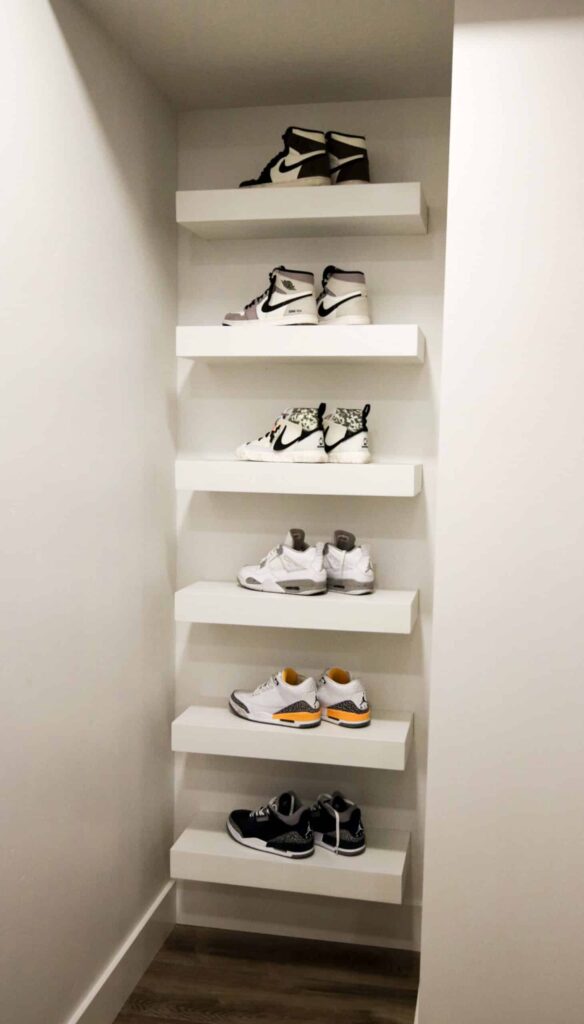
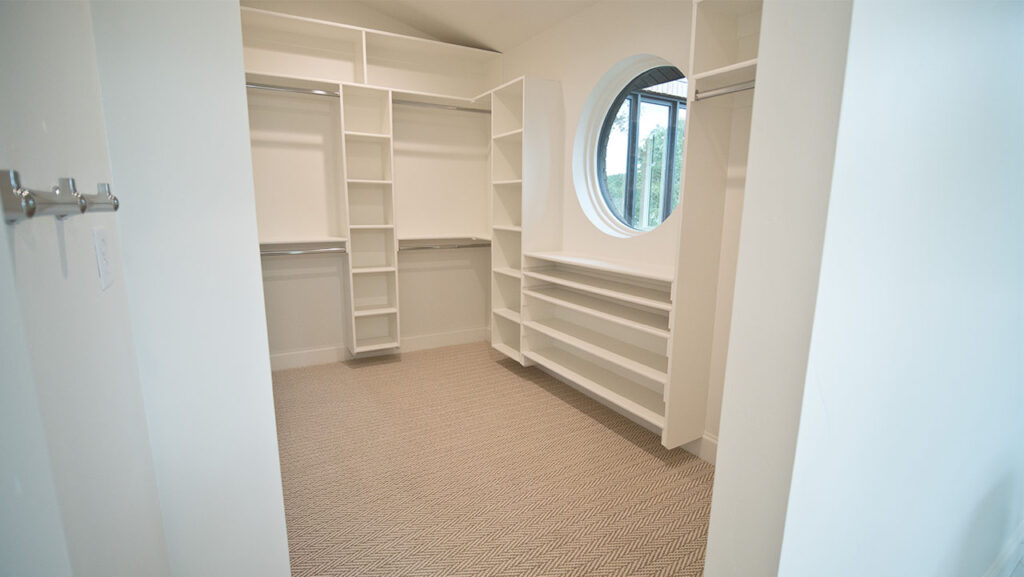
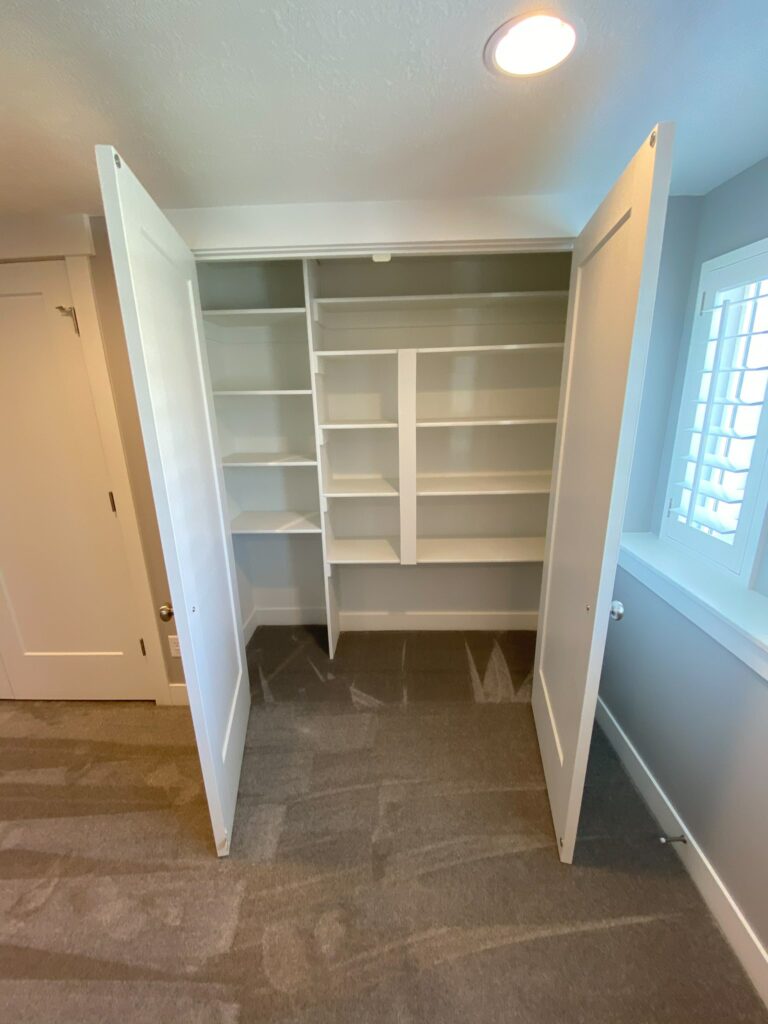
- Custom Shelving Units: Design and install tailor-made shelving systems that utilize vertical space and can be adjusted to accommodate items of varying sizes.
- Overhead Storage Solutions: Implement ceiling-mounted racks to store seldom-used or seasonal items, keeping them out of the way yet easily accessible.
- Modular Storage Containers: Utilize clear, stackable containers with labels for easy identification and retrieval, which also protect contents from moisture and dust.
- Wall-Mounted Hooks and Racks: Install hooks and racks to hang tools, sports equipment, and outdoor gear, optimizing floor space and minimizing clutter.
- Safety-First Design: Guarantee all storage installations are robust and securely anchored to prevent tipping or collapse, particularly in seismic zones common in Utah.
Northern Builders: The Solution to Common Problems in Utah Basements
Northern Builders offers a comprehensive solution to the common problems in Utah basements. From addressing moisture issues to improving insulation and maximizing space utilization, their expertise and dedication to quality craftsmanship ensure that every project is completed to the highest standards. With Northern Builders, homeowners can trust in their proven track record of delivering exceptional results that transform basements into functional, comfortable, and beautiful spaces. Choose Northern Builders to turn your basement into a true asset to your home, adding value and enjoyment for years to come.
